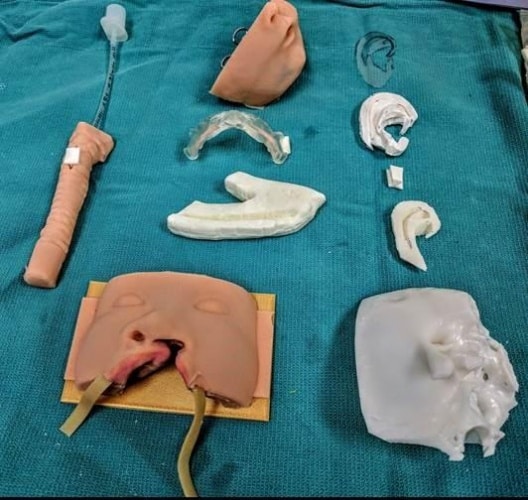
(Credit: Michigan Medicine)
Reconstructive cartilage grafting is a technique usually performed by advanced surgeons, making training a challenge. In the past, skills have been acquired on live patients, anaesthetised animals or human cadavers, but the medical community is looking increasingly to 3D printing to help simulate surgery.
In a new paper published in the journal Otolaryngology- Head and Neck Surgery, the researchers examined the effectiveness of a physical simulator exercise using a 3D-printed costal cartilage grafting tool, with most participants highly rating its realism.
"3D printing is bringing a whole new meaning to hands-on experience for surgeons in training," says David Zopf, the article's senior author and a paediatric head and neck surgeon at CS Mott Children's Hospital in Ann Arbor, Michigan.
"Hands-on experience is critical for acquiring and improving surgical skills, especially of new and complex procedures. This is an exciting tool that not only offers trainees exposure to opportunities they otherwise wouldn't have but that also allows them to demonstrate proficiency of skills before being performed on children."
Eighteen surgical trainees from Michigan participated in the exercise last year. They practised carving on a 3D printed model of a harvested human cartilage graft created through a CT scan of a paediatric patient's rib. The mould was filled with cornstarch and silicon to approximate the feeling and texture of cartilage.
"You only get one chance to carve a harvested graft from a patient's rib, so you have to do it perfectly the first time," said Cher Zhao, one of the UM trainees that took part in the study.
"It takes years of practice to learn the technical skills to do it. This was a very realistic experience and what's great is you can keep printing dozens of these models at a time so you can practise over and over again."




Nanogenerator consumes CO2 to generate electricity
Whoopee, they've solved how to keep a light on but not a lot else.